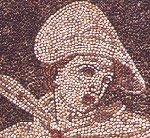In Defense of Still Paintings
I've been thinking more about what I wrote on the subject of still lifes a few days ago, and I realized that I may have created a wrong impression.
A painting doesn't need to have action. It's not like literature in that sense. A subject alone (represented by some object) can provide good material to contemplate. After all, it must be worth looking at if the painter chose to paint it, right?
Well, not necessarily. The issue is selectivity. A good artist chooses to paint an object, not merely because it exists, but because he thinks that it is, in some way, important.
The problem with the still lifes and nudes that I mentioned in my last post is the complete absence of selectivity. The artist could not care any less what the object is. It exists merely as an excuse to put strokes of paint on the canvas. As I said, this approach is fine for a college course or for private practice, but it's not good art. (An interesting question: Is it even art?)
A good artist—a Romantic one in particular—willfully selects an object that he wants to represent, then he selects the right context (or setting) to amplify it or set it off from its surroundings, and finally he uses the many tools of the painter's trade, such as certain color or lighting tricks, to draw all eyes to that object—sometimes even to just one aspect of it if he's especially clever and competent. Again, he does this, not to practice his technique, but to show what he thinks is important.
The truth is, displaying only scenes of action on the walls of a house or a gallery creates its own problem. At some point, the effect is frenetic. It brings to mind the halls of Hogwarts in the Harry Potter books where the pictures all move and talk. It's almost creepy when fifteen pairs of eyes are staring at you while you walk down a hallway and when four different battles are raging on the walls of your living room. A calming picture of, say, a well-kempt horse farm surrounded by a vast sea of emerald grasses and manicured forests would be a pleasant alternative.
Labels: fine art, romanticism


<< Home